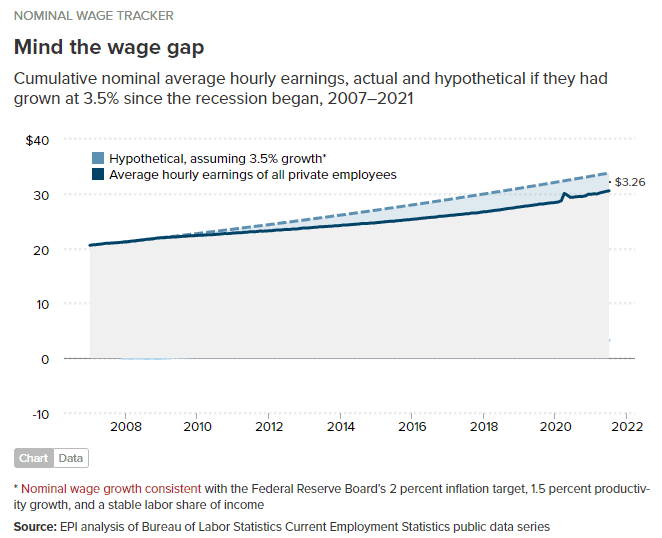Systemic failures in the hiring process worsen the problem of not hiring diverse (and possibly better qualified) people.
Diversity and Inclusion (D&I) is not only about societal pressure. It’s also good business sense. An environment that is based on cooperation and understanding leads to a more productive staff and improves profits. According to a recent McKinsey Diversity Matters report, companies with strong racial diversity are 35% more likely to have better financial returns than companies without it.
Even large companies that have an active Diversity and Inclusion (D&I) program and have a genuine desire to hire inclusively, fail to select diverse candidates because their hiring process is flawed, not necessarily because their recruiters are biased. Diveristy and Inclusion also helps with retention of the workforce.
An example: summer internships versus paid summer jobs
A recent study published in the American Economic Review revealed defects in the way candidates are selected on paper that does not necessarily reflect on the recruiter’s personal views regarding race and gender, but which does reflect on the hiring process itself.
When large companies were asked to select hypothetical candidates based on their résumés, they tended to prefer candidates who had done summer internships at a prestigious company like Google, rather than candidates who had done internships at lesser-known companies.
For candidates who had done no internship but rather taken a summer job, the study found no improvement in their chances of being short-listed.
In short, interns were preferred.

The flaw here is that the selection process doesn’t take into account the fact of unpaid internships and the candidate’s financial means. If a student can’t afford to go without income during one summer, they might need to take a job instead of an internship, working as a barista or a cashier to pay bills. That unfairly reduces their chances of making it through the selection process.
This affects candidates from Hispanic and African American households more than Caucasian ones. In 2019, the median household income of African American families was $30,000 lower than caucasian families. And Hispanic families’ median income was almost $20,000 lower than caucasian families.
Candidates from wealthier households are far more likely to be able to afford low-paying or non-paying internships. Recruiters blindly pass on these candidates’ résumés, believing they are evaluating them purely on their merits. Nothing could be further from the truth.
The pandemic opened our eyes to financial inequality
The burden of household financial inequality, by race, became starkly apparent during the 2020 pandemic amid the rash of redundancies and unemployment. When asked if they could come up with $400 dollars in an emergency, 20% more unemployed African American households than unemployed white households said they could not. African American households have fewer savings than white households and “falling on hard times” for many African American households could literally mean no food on the table.

That puts a candidate’s decision to skip an internship with no pay in a much different light. Even if that candidate’s family is not currently unemployed, decades of growing up in a situation where the candidate knows their family’s hold on financial security is a tenuous one will engender a different mindset than someone who has always known they have a cushion to fall back on.
That choice to take the job instead of the internship means the chances of being passed up for a future job are higher. And so the problem perpetuates itself, widening the divide.
The flawed system ends up becoming a travesty of diversity
Above is only one aspect of the flawed hiring process. But let’s stick with it as a proof-of-concept.
Using the financial bias described above, a company would ultimately end up with wealthier candidates on their shortlist, regardless of race, gender, or sexual orientation. Statistically, these candidates are far more likely to be white or Asian.
Given 10 candidates who are all more-or-less equally qualified, the company must now make a call on who to pick. Do they pick the white heterosexual male and risk public outcry for lacking diversity? Do they pick the Hispanic LGBTQ candidate or the African American single parent?
Sadly, by this stage of the hiring cycle, the choice often comes down to quotas and a diversity checkbox on the application form, which is a travesty of the spirit of diversity. For D&I to truly work, it must be based purely on merits, not on checkboxes.
But the merits used in the hiring process are wildly skewed so as to discourage diversity.
A possible solution: Hiring based on data versus opinions
Unconscious bias pervades the hiring process. In this respect, AI might provide the solution. Unconscious bias isn’t only about subconsciously preferring male candidates to female candidates. It is also linked to our example above—preferring interns at a prestigious company versus those who took a summer job.
By shifting to a data-driven model rather than an opinion-based one, the chances of hiring on merits alone are raised.
But even AI can suffer the flaws of human thinking. If given the wrong question to learn from—such as ”Did you do an internship over the summer? Where?”—machine-learning can only go so far.
The process itself needs an overhaul, whether we use AI or not. And to do that, recruiting companies need to recognize there is a problem, and that solving it is going to require far more than a bandaid or a few more diversity checkboxes on their application forms.



